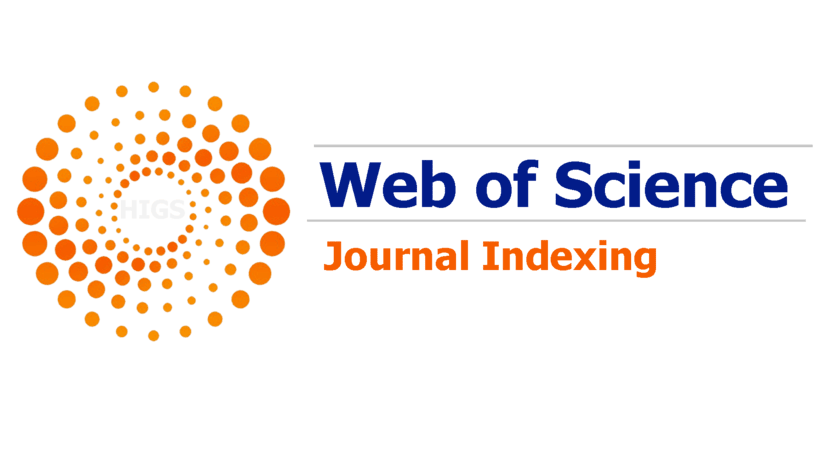Avaliação de perfis de resistência antimicrobiana em pisciculturas que utilizam fonte de água subterrânea compartilhada
DOI:
https://doi.org/10.20950/1678-2305/bip.2024.51.e907Palavras-chave:
Resistência bacteriana, Piscicultura, Antibiograma, Água subterrâneaResumo
O uso indiscriminado de antimicrobianos na aquicultura é uma prática preocupante por causa do risco de disseminação de cepas bacterianas resistentes a medicamentos. Este estudo teve como objetivo avaliar o perfil de resistência bacteriana na água que abastece pisciculturas localizadas em Buriti dos Lopes, Piauí, Brasil. A contagem bacteriana para a água que abastece as fazendas, ponto P1, foi de 6,5 log UFC/mL, enquanto a contagem na Fazenda A (FA) variou de 3,31 a 3,66 log UFC/mL e na Fazenda B (FB) de 2,56 a 2,79 log UFC/mL. Entre as 40 cepas (67,8%) testadas para resistência antimicrobiana, foi observada resistência a quinolona (15,25%), cefalosporinas de primeira geração (16,95%), cefalosporinas de terceira geração (35,6%), aminopenicilina (30,51%), sulfonamida (8,47%) e carbapenêmico (1,7%). A análise de similaridade revelou semelhança de perfil de resistência superior a 85% entre isolados de P1-FA e P1-FB, sugerindo que a fonte de água influencia significativamente a disseminação da resistência. De forma alarmante, cepas bacterianas exibindo múltiplas resistências antimicrobianas foram encontradas nas águas subterrâneas que abastecem as fazendas de peixes. Portanto, investigar a disseminação de perfis de resistência fenotípica e genotípica é crucial para fundamentar as políticas públicas que abordam os impactos do uso indiscriminado de medicamentos e sua disseminação ambiental.
Referências
Adinortey, C. A., Aheto, D. W., Boateng, A. A., & Agbeko, R. (2020). Multiple antibiotic resistance-coliform bacteria in some selected fish farms of the Central Region of Ghana. Scientifica, 1-11. https://doi.org/10.1155/2020/6641461
Amarasiri, M., Sano, D., & Suzuki, S. (2020). Understanding human health risks caused by antibiotic resistant bacteria (ARB) and antibiotic resistance genes (ARG) in water environments: Current knowledge and questions to be answered. Critical Reviews in Environmental Science and Technology, 50(19), 2016-2059. https://doi.org/10.1080/10643389.2019.1692611
Amenyogbe, E., Chen, G., Wang, Z., Huang, J., Huang, B., & Li, H. (2020). The exploitation of probiotics, prebiotics and synbiotics in aquaculture: Present study, limitations and future directions. Aquaculture International, 28, 1017-1041. https://doi.org/10.1007/s10499-020-00509-0
Andrade, L., Kelly, M., Hynds, P., Weatherill, J., Majury, A., & O’Dwyer, J. (2020). Groundwater resources as a global reservoir for antimicrobial-resistant bacteria. Water Research, 170, 115360. https://doi.org/10.1016/j.watres.2019.115360
Bilal, M., Mehmood, S., Rasheed, T., & Iqbal, H. M. N. (2020). Antibiotic traces in the aquatic environment: Persistence and adverse environmental impact. Current Opinion in Environmental Science and Health, 14, 68-74. https://doi.org/10.1016/j.coesh.2019.11.005
Brito, J. M. de, Ferreira, A. H. C., Santana Júnior, H. A., Oliveira, A. P. A., Santos, C. H. L., & Oliveira, L. T. S. (2019). Desempenho zootécnico de juvenis de tilápias do Nilo (Oreochromis niloticus) alimentados com cepas probióticas e submetidas a desafio sanitário. Ciência Animal Brasileira, 20, e4964. https://doi.org/10.1590/1809-6891v20e-37348
Burridge, L., Weis, J. S., Cabello, F., Pizarro, J., & Bostick, K. (2010). Chemical use in salmon aquaculture: A review of current practices and possible environmental effects. Aquaculture, 306(1-4), 7-23. https://doi.org/10.1016/j.aquaculture.2010.05.020
Carvalho, M. F. M., Sousa, R. S., & Conceição, J. M. (2023). Expansão urbana e impactos socioambientais na paisagem em Buriti dos Lopes, Piauí, Brasil. Ciências Geográficas, 20(2), 578-588. https://agbbauru.org.br/publicacoes/revista/anoXXVII_2/agb_xxvii_2_web/agb_xxvii_2-12.pdf
Chidinma, M. M. (2024). Bacteriological evaluation of fish pond wastewater from different fish ponds in Owerri, Imo State, Nigeria. World News of Natural Sciences, 53, 223-230.
Dong, K., Pan, H., Yang, D., Rao, L., Zhao, L., Wang, Y., & Liao, X. (2020). Induction, detection, formation, and resuscitation of viable but non-culturable state microorganisms. Comprehensive Reviews in Food Science and Food Safety, 19(1), 149-183. https://doi.org/10.1111/1541-4337.12513
Eckert, E. M., Di Cesare, A., Coci, M., & Corno, G. (2018). Persistence of antibiotic resistance genes in large subalpine lakes: The role of anthropogenic pollution and ecological interactions. Hydrobiologia, 824, 93-108. https://doi.org/10.1007/s10750-017-3480-0
Eckert, E. M., Di Cesare, A., Malki, L.-S., Villiger, J., Pernthaler, J., Callieri, C., Bertoni, R., & Corno, G. (2019). Seasonality of the antibiotic resistance gene blaCTX-M in temperate Lake Maggiore. Hydrobiologia, 843, 143-153. https://doi.org/10.1007/s10750-019-04043-w
Felske, A., Akkermans, A. D. L., & De Vos, W. M. (1998). Quantification of 16S rRNAs in complex bacterial communities by multiple competitive reverse transcription-PCR in temperature gradient gel electrophoresis fingerprints. Applied and Environmental Microbiology, 64(11), 4581-4587. https://doi.org/10.1128/aem.64.11.4581-4587.1998
Gao, P., Mao, D., Luo, Y., Wang, L., Xu, B., & Xu, L. (2012). Occurrence of sulfonamide and tetracycline resistant bacteria and resistance genes in aquaculture environment. Water Research, 46(7), 2355-2364. https://doi.org/10.1016/j.watres.2012.02.004
Gastalho, S., Da Silva, G. J., Ramos, F., & De Revisão, A. (2014). Uso de antibióticos em aquacultura e resistência bacteriana: Impacto em saúde pública. Acta Farmacêutica Portuguesa, 3(1), 29-45. Retrieved from https://actafarmaceuticaportuguesa.com/index.php/afp/article/view/40/52
Gibbs, E. P. J. (2014). The evolution of One Health: A decade of progress and challenges for the future. Veterinary Record, 174(4), 85-91. https://doi.org/10.1136/vr.g143
Gomes, I. B., Maillard, J. Y., Simões, L. C., & Simões, M. (2020). Emerging contaminants affect the microbiome of water systems—Strategies for their mitigation. npj Clean Water, 3, 39. https://doi.org/10.1038/s41545-020-00086-y
Harnisz, M., Korzeniewska, E., & Gołaś, I. (2015). The impact of a freshwater fish farm on the community of tetracyclineresistant bacteria and the structure of tetracycline resistance genes in river water. Chemosphere, 128, 134-141. https://doi.org/10.1016/j.chemosphere.2015.01.035
Hossain, A., Habibullah-Al-Mamun, M., Nagano, I., Masunaga, S., Kitazawa, D., & Matsuda, H. (2022). Antibiotics, antibioticresistant bacteria, and resistance genes in aquaculture: Risks, current concern, and future thinking. Environmental Science and Pollution Research, 29(9), 11054-11075. https://doi.org/10.1007/s11356-021-17825-4
Hucheng, J., Xiaohui, C., Wenji, B., Longlong, F., Qin, Q., Liqiang, Z., & Minghua, W. (2020). Comparison of bacterial communities in channel catfish Ictalurus punctatus culture ponds of an industrial ecological purification recirculating aquaculture system. Aquaculture Research, 51(6), 2432-2442. https://doi.org/10.1111/are.14587
Instituto Brasileiro de Geografia e Estatística (IBGE) (2023). Cidades. Buriti dos Lopes. IBGE. Retrieved from https://cidades.ibge.gov.br/brasil/pi/buriti-dos-lopes/panorama
Kovalenko, K. E. (2019). Interactions among anthropogenic effects on aquatic food webs. Hydrobiologia, 841, 1-11. https://doi.org/10.1007/s10750-019-04018-x
Lima, R. M. S., Figueiredo, H. C. P., Faria, F. C. D., Picolli, R. H., Bueno Filho, J. S. D. S., & Logato, P. V. R. (2006). Resistência a antimicrobianos de bactérias oriundas de ambiente de criação e filés de tilápias do Nilo (Oreochromis niloticus). Ciência e Agrotecnologia, 30(1), 126-132. https://doi.org/10.1590/S1413-70542006000100016
Liu, X., Wang, H., & Zhao, H. (2021). Prevalence of antibiotic resistance genes in wastewater collected from ornamental fish markets in northern China. Environmental Pollution, 271, 116316. https://doi.org/10.1016/j.envpol.2020.116316
Lu, Z., Lin, W., Li, Q., Wu, Q., Ren, Z., Mu, C., Wang, C., Shi, C., & Ye, Y. (2024). Recirculating aquaculture system as microbial community and water quality management strategy in the larviculture of Scylla paramamosain. Water Research, 252, 121218. https://doi.org/10.1016/j.watres.2024.121218
Machado, A., & Bordalo, A. A. (2014). Prevalence of antibiotic resistance in bacteria isolated from drinking well water available in Guinea-Bissau (West Africa). Ecotoxicology and Environmental Safety, 106, 188-194. https://doi.org/10.1016/j.ecoenv.2014.04.037
McAleese, N., Gage, J. D. G., & Lambshead, P. J. D. (1997). BioDiversity Professional statistics analysis software. Scottish Association for Marine Science and the Natural History Museum.
Milijasevic, M., Veskovic-Moracanin, S., Milijasevic, J. B., Petrovic, J., & Nastasijevic, I. (2024). Antimicrobial resistance in aquaculture: Risk mitigation within the One Health context. Foods, 13(15), 2448. https://doi.org/10.3390/foods13152448
Novais, C., Campos, J., Freitas, A. R., Barros, M., Silveira, E., Coque, T. M., Antunes, P., & Peixe, L. (2018). Water supply and feed as sources of antimicrobial-resistant Enterococcus spp. in aquacultures of rainbow trout (Oncorhynchus mykiss), Portugal. Science of the Total Environment, 625, 1102-1112. https://doi.org/10.1016/j.scitotenv.2017.12.265
Odeyemi, A. T., Akinjogunla, O. J., Ajayi, A. O., Thomas, R. M., & Adeoye, O. O. (2023). Stream and well water samples from two rural communities in Ekiti State, Nigeria: Assessment of physicochemical parameters, bacteriological quality and public health significance. Acta Scientiarum. Biological Sciences, 45(1), e64296. https://doi.org/10.4025/actascibiolsci.v45i1.64296
Preena, P. G., Swaminathan, T. R., Kumar, V. J. R., & Singh, I. S. B. (2020). Antimicrobial resistance in aquaculture: A crisis for concern. Biologia, 75(12), 1497-1517. https://doi.org/10.2478/s11756-020-00456-4
Read, P., & Fernandes, T. (2003). Management of environmental impacts of marine aquaculture in Europe. Aquaculture, 226(1-4), 139-163. https://doi.org/10.1016/S0044-8486(03)00474-5
Silva, G. C., Rissi, L. B., & Menezes, D. B. (2014). Avaliação da qualidade dos recursos subterrâneos no município de Buriti dos Lopes-Pi. Águas Subterrâneas, 28(2), 63-74. https://aguassubterraneas.abas.org/asubterraneas/article/view/28306
Soares, J. B., Casimiro, A. R. S., & Aguiar, L. M. B. (1991). Método de coloração de Gram. In J. B. Soares, A. R. S. Casimiro & L. M. B. Albuquerque (Eds.), Microbiologia Básica. Editora da UFC.
Szekeres, E., Chiriac, C. M., Baricz, A., Szőke-Nagy, T., Lung, I., Soran, M. L., Rudi, K., Dragos, N., & Coman, C. (2018). Investigating antibiotics, antibiotic resistance genes, and microbial contaminants in groundwater in relation to the proximity of urban areas. Environmental Pollution, 236, 734-744. https://doi.org/10.1016/j.envpol.2018.01.107
Tolentino, F. M., De Almeida, I. A. Z. C., Dos Santos, C. C. M., Teixeira, I. S. D. C., Silva, S. I. D. L. E., Nogueira, M. C. L., Arroyo, M. G., Faim, W. R., De Almeida, M. T. G., & Peresi, J. T. M. (2021). Phenotypic and genotypic profile of the antimicrobial resistance of bacterial isolates and evaluation of physical and chemical potability indicators in groundwater in Brazil. International Journal of Environmental Health Research, 31(2), 186-201. https://doi.org/10.1080/09603123.2019.1640354
Vestrum, R. I., Attramadal, K. J., Winge, P., Li, K., Olsen, Y., Bones, A. M., Vadstein, O., & Bakke, I. (2018). Rearing water treatment induces microbial selection influencing the microbiota and pathogen-associated transcripts of cod (Gadus morhua) larvae. Frontiers in Microbiology, 9, 851. https://doi.org/10.3389/fmicb.2018.00851
Watts, J., Schreier, H., Lanska, L., & Hale, M. (2017). The rising tide of antimicrobial resistance in aquaculture: Sources, sinks and solutions. Marine Drugs, 15(6), 158. https://doi.org/10.3390/md15060158
Wu, D. L., Zhang, M., He, L. X., Zou, H. Y., Liu, Y. S., Li, B. B., Yang, Y. Y., Liu, C., He, L. Y., & Ying, G. G. (2020). Contamination profile of antibiotic resistance genes in groundwater in comparison with surface water. Science of the Total Environment, 715, 136975. https://doi.org/10.1016/j.scitotenv.2020.136975
Xiao, G., Cheng, X., Zhu, D., Li, Z., Feng, L., Peng, X., Lu, Z., & Xie, J. (2023). Exploring the mechanism of a novel recirculating aquaculture system based on water quality parameters and bacterial communities. Environmental Science and Pollution Research, 30(12), 34760-34774. https://doi.org/10.1007/s11356-022-24585-2
Zainab, S. M., Junaid, M., Xu, N., & Malik, R. N. (2020). Antibiotics and antibiotic resistant genes (ARGs) in groundwater: A global review on dissemination, sources, interactions, environmental and human health risks. Water Research, 187, 116455. https://doi.org/10.1016/j.watres.2020.116455
Downloads
Publicado
Edição
Seção
Licença
Copyright (c) 2025 Lucas Ataide de Oliveira, Marjory Lais da Costa Lima, Chuadê Cachoeira do Nascimento, Juliana Isis Araujo Pereira, Danielle de Sousa Rufino, Rafael dos Santos Rocha, Fátima Cristiane Teles de Carvalho, Taiane Maria de Oliveira, Oscarina Viana de Sousa, Rosa Helena Rebouças

Este trabalho está licenciado sob uma licença Creative Commons Attribution 4.0 International License.









